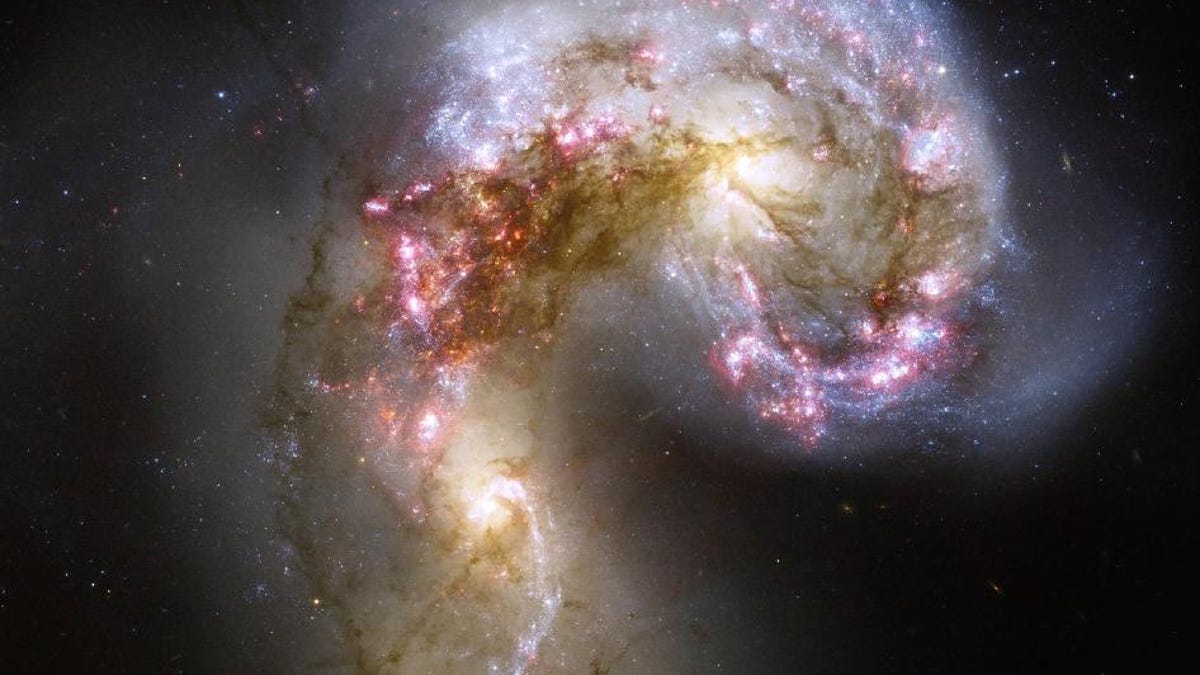Colliding black holes could warp space-time itself
If the two black holes meet, they could release as much energy as 100 million supernova explosions as they shatter their galaxy, a new study finds.

A team of prominent researchers has discovered what appears to be the start of two massive black holes at the centers of their own galaxies beginning to collide.
Such an event should come as no surprise, considering that there are up to 200 billion galaxies in the universe (according to Space.com), so two of them are bound to bump into each other from time to time. In fact, astronomers have already observed the merging of galaxies (as seen in the image above), but they've never before witnessed the end-stage process of galaxy commingling, which results when the two central black holes smash into each other, releasing some pretty violent cosmic fireworks that could warp space-time itself.
The researchers, including scientists from Caltech and NASA's Jet Propulsion Lab, have theorized that an unusual light signal they're seeing from quasar PG 1302-102 -- essentially a black hole emitting light from the superheated particles swirling around its gravitational drain -- is being caused by the cosmic dance between two black holes in the system, each located less than the length of our solar system apart. The theory was published this week in the journal Nature.
While other cosmic phenomena could explain the light signature, the scientists became confident that their theory is the most likely after analyzing the quasar's light spectrum.
"When you look at the emission lines in a spectrum from an object, what you're really seeing is information about speed -- whether something is moving toward you or away from you and how fast. It's the Doppler effect," Eilat Glikman, study co-author and assistant professor of physics at Middlebury College in Vermont said in a statement.
"With quasars, you typically have one emission line, and that line is a symmetric curve. But with this quasar, it was necessary to add a second emission line with a slightly different speed than the first one in order to fit the data. That suggests something else, such as a second black hole, is perturbing this system."
If the theory is correct, study co-author S. George Djorgovski of the California Institute of Technology told The New York Times that when the two black holes collide, they could release the energy equivalent to 100 million supernova explosions, which would rip apart the galaxy in which they're floating. The collision would also release gravitational waves, ripples in the fabric of space-time predicted by Einstein's theory of general relativity, Djorgovski told the Times.
Unfortunately, astronomers hoping to witness such an event are out of luck, as the predicted union won't take place for about another million years -- a long time in human standards, but not cosmic ones. Of course, the universe itself already knows whether the theory is correct because the light we're seeing from this system, located in the Virgo constellation, comes from 3.5 billion light years away -- meaning everything we're witnessing already took place billions of years ago. But until we come up with our own way to warp the space-time continuum, I guess we'll just have to wait and see.

